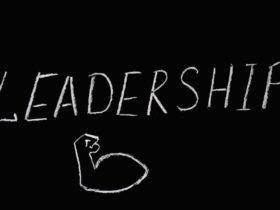Leadership has been traditionally studied under the lens of science, focusing on measurable attributes, behavioral patterns, and data-driven strategies. However, there’s another side to leadership that often goes unexplored – viewing leadership as an art. This perspective emphasizes the intuitive, creative, and inspirational elements of leadership that contribute to its effectiveness.
Leadership as an art involves understanding human emotions, utilizing personal skills, and fostering a shared vision. This guide provides an in-depth exploration why leadership is an art, illustrated by real-world examples, and offers insights into how one can cultivate the art of leadership.
Understanding Leadership as an Art
Leadership as an art encompasses those aspects of leadership that go beyond the measurable or analytical – it is about the intuitive, emotive, and inspirational qualities that a leader brings to their role. It acknowledges that leadership isn’t a one-size-fits-all formula but a dynamic process that varies based on the leader’s individual style, the team they are leading, and the specific circumstances or challenges they are facing.
Understanding leadership as an art involves recognizing the importance of qualities such as empathy, creativity, vision, and the ability to inspire and motivate others. It means realizing that effective leadership often requires the ability to read between the lines, to understand what isn’t being said, and to make decisions based not just on data, but also on instinct and human understanding.
This aspect of leadership requires a deep understanding of human nature, emotions, and motivations. An artistic leader is one who can connect with their team on an emotional level, who can paint a compelling vision of the future that inspires their team to strive towards it, and who can adapt their approach based on the changing dynamics of their team and environment.
Consider the example of a conductor leading an orchestra. Each musician in the orchestra is an expert in their instrument, and the conductor’s role isn’t to tell each musician how to play their instrument – they already know how to do that. The conductor’s role is to bring all the individual musicians together, to guide them towards playing in harmony, and to interpret the music in a way that creates an unforgettable experience for the audience. This requires an artistic touch – a deep understanding of the music, an ability to connect with the orchestra and communicate the vision effectively, and the creativity to bring something unique to the performance.
In the same way, a leader in any field needs to be able to guide their team, to bring out the best in each individual, and to create a shared understanding of the vision and goals they are working towards. This involves not just the science of leadership – the strategies, the techniques, the measurable data – but also the art of leadership, the intangible qualities that can inspire a team to achieve more than they believed they could.

Cultivating the Art of Leadership
Developing the art of leadership involves more than just mastering specific skills or knowledge areas. It’s about cultivating a mindset, understanding people, and harnessing creativity and empathy to inspire and guide others. Here are some strategies that can help you foster this artistic aspect of leadership.
Embrace Emotional Intelligence
Emotional intelligence is the ability to understand and manage your emotions and those of others. Leaders with high emotional intelligence can navigate complex social interactions, manage conflicts more effectively, and foster stronger, more trusting relationships with their team members. Emotional intelligence can be developed by practicing self-awareness, empathy, and effective emotional management.
Foster a Vision
Artistic leaders inspire their team with a compelling vision of the future. This requires creativity and the ability to see possibilities that others don’t. Developing this aspect of leadership involves practicing strategic thinking, engaging your imagination, and being open to new ideas and perspectives.
Communicate Authentically
Effective communication is a crucial leadership skill. Artistic leaders know how to communicate their vision and ideas in a way that resonates with their team. They listen actively, speak honestly, and are adept at understanding and navigating the emotional undercurrents of their interactions. To improve your communication skills, focus on active listening, practice clear and open communication, and develop your skills in non-verbal communication.
Understand Your Team
To lead effectively, you need to understand the people you’re leading. This means taking the time to get to know your team members – their strengths, their weaknesses, their aspirations, and their fears. Understanding your team on a deeper level allows you to guide them more effectively, to motivate them in ways that resonate with them, and to create a team culture that supports everyone’s success.
Lead by Example
Artistic leaders inspire others not just through their words, but through their actions. They embody the values they promote and set an example for their team through their behavior. This kind of leadership requires self-awareness, integrity, and the courage to do what’s right, even when it’s challenging.
Be Resilient and Adaptable
Leadership often involves navigating uncertain and challenging situations. Artistic leaders demonstrate resilience and adaptability, maintaining their composure under pressure and adapting their approach as needed. To cultivate these qualities, practice managing stress, staying positive in the face of adversity, and being open to change.
Cultivating the art of leadership is a lifelong journey of learning and growth. It requires self-awareness, commitment, and a willingness to step outside your comfort zone. But the rewards – both for you and for the people you lead – can be truly transformational.
Five Real-World Examples of Why Leadership is an Art
1. Steve Jobs
As the co-founder of Apple Inc., Steve Jobs was revered for his unique vision and his ability to inspire his team to transform that vision into groundbreaking products. Jobs had an intuitive knack for understanding what people desired even before they knew it themselves. This foresight wasn’t driven by market research or data analysis but emerged from his artistic sense of predicting future trends. His famous assertion, “A lot of times, people don’t know what they want until you show it to them,” encapsulates his leadership style perfectly.
2. Oprah Winfrey
Renowned media executive and talk show host, Oprah Winfrey’s leadership style exemplifies the power of emotional connection and authentic communication. She has always been open about her struggles and experiences, connecting with her audience and staff on a deeply personal level. This emotional bond has not only built trust and loyalty among her followers but also empowered many to take control of their own lives.

3. Mahatma Gandhi
As a major proponent of the Indian independence movement, Mahatma Gandhi’s leadership was deeply rooted in empathy, non-violence, and motivational charisma. He managed to galvanize millions of people to pursue a shared goal without resorting to violence or authoritative control. Instead, he used persuasive communication, emotional appeal, and symbolisms (like the Salt March) to inspire people, demonstrating a highly artistic form of leadership.
4. Nelson Mandela
Nelson Mandela’s leadership journey, particularly during the anti-apartheid movement, was marked by his immense resilience, empathetic understanding, and power to unify a deeply divided nation. Even after spending 27 years in prison, his unwavering commitment to the cause and his ability to forgive those who imprisoned him showed his extraordinary leadership capabilities. His approach was less about authoritative command and more about reconciling differences and fostering unity—an art in itself.
5. Richard Branson
Richard Branson, founder of the Virgin Group, is known for his people-first approach to leadership and his emphasis on maintaining a fun and vibrant workplace culture. He encourages creativity, risk-taking, and mutual respect within his companies, creating an environment where employees feel valued and empowered. His knack for recognizing potential, nurturing talent, and leading with empathy and enthusiasm highlights the artistic aspects of his leadership style.
Conclusion
Understanding leadership as an art brings a fresh perspective to the concept of leadership. It moves beyond the realm of rules, formulas, and methodologies, and delves into the complex yet impactful world of emotional intelligence, creative thinking, and inspirational communication. Leadership, when viewed as an art, becomes a more holistic and people-centric process, acknowledging the human aspects of leading and following.
Cultivating the art of leadership requires self-awareness, empathy, creativity, and perseverance. By embracing this perspective, individuals can truly unlock their leadership potential, influencing others not merely through authority but through inspiration, connection, and shared vision.


















